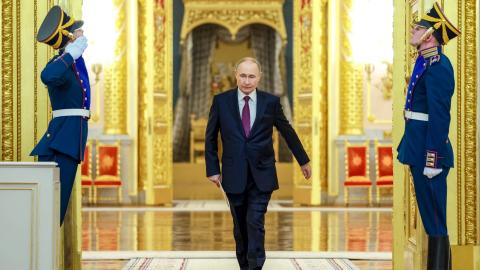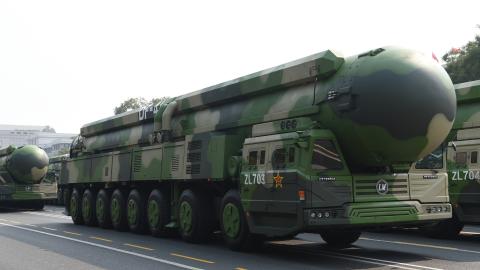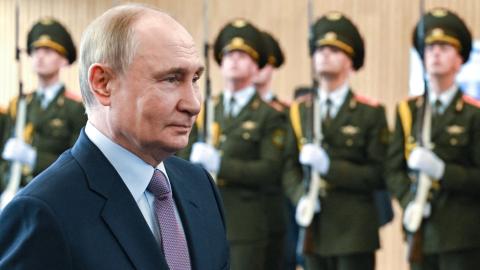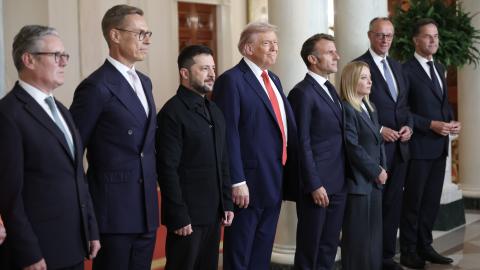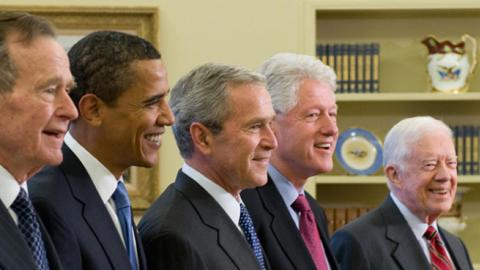Recently released GDP figures for the second quarter of 2016 invite the question of how the gross domestic product has fared under each of the dozen post-World War II presidents, a period spanning 70 years. According to figures from the U.S. Commerce Department’s Bureau of Economic Analysis (BEA), average annual real (inflation-adjusted) GDP growth in the United States since 1946 (through 2015, the last full year for which figures have been released) has been 2.9 percent.
While that has been the postwar norm, however, average annual real GDP growth has varied greatly by president, ranging from a high of 5.3 percent under President Lyndon Johnson to a low of 1.5 percent under President Barack Obama, as the following chart conveys (full size JPG here
Here is the complete list of average annual real GDP growth by postwar president (in descending order):
Johnson (1964-68), 5.3%
Kennedy (1961-63), 4.3%
Clinton (1993-2000), 3.9%
Reagan (1981-88), 3.5%
Carter (1977-80), 3.3%
Eisenhower (1953-60), 3.0%
(Post-WWII average: 2.9%)
Nixon (1969-74), 2.8%
Ford (1975-76), 2.6%
G. H. W. Bush (1989-92), 2.3%
G. W. Bush (2001-08), 2.1%
Truman (1946-52), 1.7%
Obama (2009-15), 1.5%
(According to the BEA, real GDP growth in 2016 has been 0.8 percent in the first quarter and 1.2 percent in the second quarter. Those figures, being from an incomplete year, are not included in President Obama’s tally. If economic growth does not improve over the rest of 2016, however, his overall tally would drop slightly.)
Another way to examine economic success under various presidents is to look at whether the economy ever really grew significantly on their watch. President Harry Truman’s average, for example, is held down dramatically by his having been in office in the immediate aftermath of WWII. In 1946, the economy severely retracted, with a decline in real GDP that was more than four times as large (-11.6 percent) as in any year since. Indeed, one could argue that, from an economic perspective, 1946 should be regarded as part of the WWII era—it clearly was influenced by the war—rather than as part of the post-WWII era. From 1947-onward, average annual real GDP growth in the postwar era (again, through 2015) has been 3.2 percent.
But the economy also truly flourished during portions of Truman’s tenure. In fact, Truman’s best year of economic growth (8.7 percent, in 1950) was better than any other postwar president’s best year. At the other end of the spectrum, President Obama’s best year of economic growth (2.6 percent, in 2015) has been weaker than any other postwar president’s.
The following chart shows the best year of real GDP growth under each postwar president (full size JPG here
Here is the complete list of the best year of real GDP growth under each postwar president (in descending order):
Truman (1950), 8.7%
Reagan (1984), 7.3%
Eisenhower (1955), 7.1%
Johnson (1966), 6.6%
Kennedy (1962), 6.1%
Nixon (1973), 5.6%
Carter ((1978), 5.6%
(Average best year for post-WWII presidents: 5.6%)
Ford (1976), 5.4%
Clinton (1999), 4.7%
G. W. Bush (2004), 3.8%
G. H. W. Bush (1989), 3.7%
(Average for all postwar years: 2.9%)
Obama (2015), 2.6%

